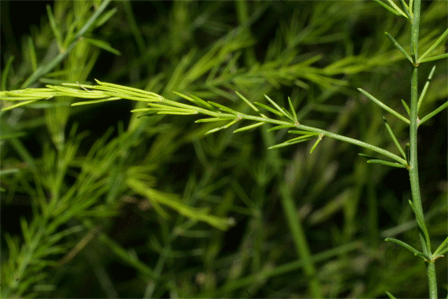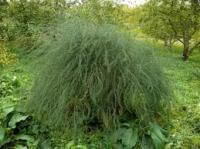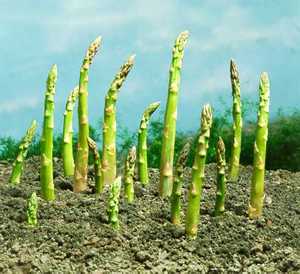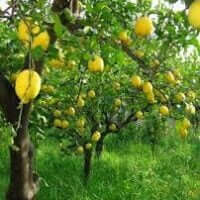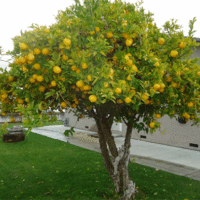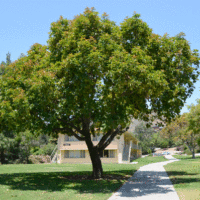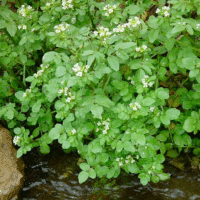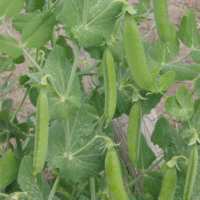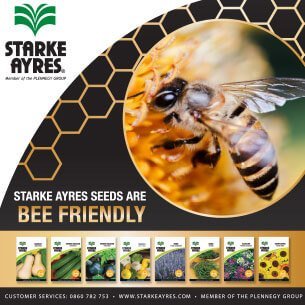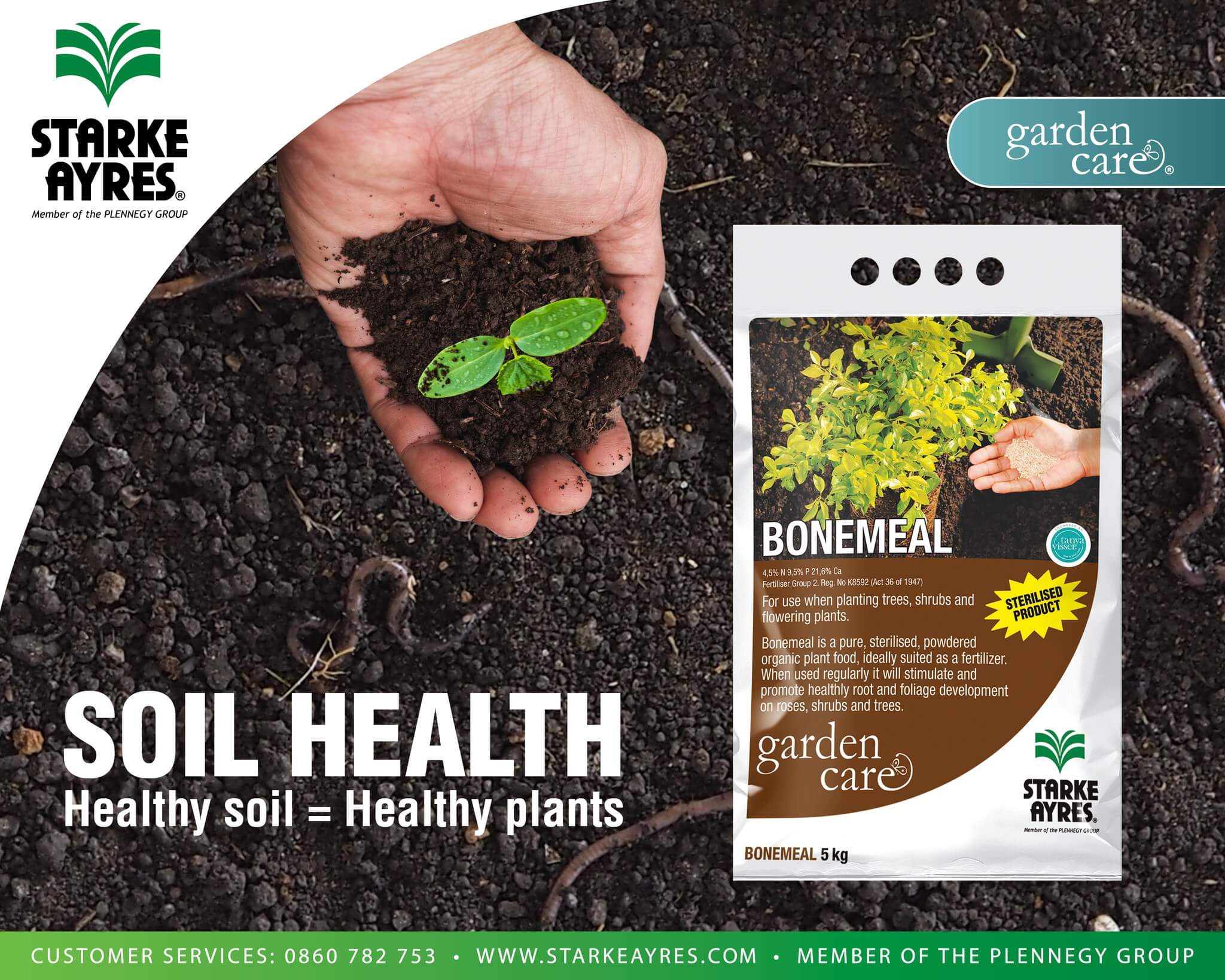| Botanical name | Asparagus officinalis |
|---|---|
| Plant Care |  Deciduous Deciduous – Sheds Its Leaves Annually  Full Sun Full Sun – Prefers 6 or more hours of sun per day.  Frost Sensitive Frost Sensitive – Will Get Damaged and Possibly Killed During Periods of Frost.  Moderate Watering Moderate Watering – Requires Regular Watering.  Pruning Required Pruning Required – Needs to be Pruned.  Non Indigenous Non Indigenous – Exotic to South Africa. |
| Categories | |
| Common name(s) | Asparagus |
| Origin | |
| Drought tolerance | High |
| Planting instructions | Before planting crowns, prepare beds or trenches by digging over the soil to one spade depth, and adding lots of compost, well-rotted manure and general fertilizer at recommended quantities. Plant crowns 150–200mm deep and 500mm apart in the row. |
| Maintenance | Do not cover new shoots. Water and fertilize regularly throughout Summer to encourage strong growth. Cut foliage down to ground level during winter. Apply general fertilizer in late Winter. |
| Soil conditions | Well dug and richly composted |
| Uses | Use this plant as companion plant for tomatoes, which repel the asparagus beetle, while asparagus may repel some harmful root nematodes that affect tomato plants. |
| Interesting planting ideas | Select the best-developed crowns from these year-old plants to grow on in their permanent bed and remove the rest. |
| Interesting info | For white asparagus, cover rows with soil to form a mound (±150mm high) over the crowns and keep mounding soil around the spears as they grow. This process, called etiolation, deprives the plant of light, so it cannot produce chlorophyll and remains white or light-coloured. |
| Common pests and diseases | Cutworms, asparagus beetles, slugs, snails and rust.(A useful companion plant for tomatoes, which repel the asparagus beetle, while asparagus may repel some harmful root nematodes that affect tomato plants.) |
| Recommended varieties | ‘U.C. 157–F2’, an early growing hybrid with long, uniform spears and a high yield potential. |
| Harvest | For white asparagus, harvest spears from three-year-old crowns as soon as the tips appear. Cut by pushing a sharp knife through the soil to sever the spear ±150mm below ground. Cut green asparagus spears 150–200mm above ground level, before the tips open. Do not cut spears after the end of October or you will deplete the plant for next year’s growth. |
| Yield | Twenty plants should be enough to provide for a family of four. |
| When to sow | |
| Seed sowing instructions | Sow seed 100–150mm apart in a seedbed during spring. Seeds germinate slowly, but seedlings develop quickly once they emerge. Seedlings should be about 12 months old to develop a crown. |
Asparagus officinalis (Asparagus)
- Botanical name: Asparagus officinalis
- Common name(s): Asparagus
- Categories: Fruits and Vegetables
Plant description:
A long-lived deciduous perennial that is closely related to ornamental asparagus ferns. It is best suited to mild or cold regions. Green and white asparagus come from the same plant; white asparagus results from the plants being denied light while they are growing.
Family: Liliaceae
Botanical Pronunciation: uh-SPARE-uh-gus uh-fiss-ih-NAY-liss
Asparagus officinalis requirements and features
info on these icons
Moderate Maintenance
Requires moderate maintenance.
Prohibited Use Notice: No Data Scraping Allowed Except for Search Engine Indexing:
The content provided on PlantInfo.co.za is intended for personal, non-commercial use only. Unauthorized extraction, reproduction, or use of the data, including scraping, for any purpose other than search engine indexing is strictly prohibited. Violations of these terms may result in legal action. By accessing and using this website, you agree to comply with these conditions and acknowledge the legal restrictions on the use of our content.
